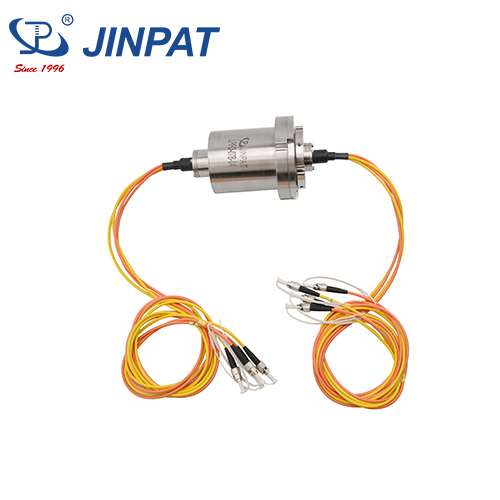


Published on Jan 2, 2025
Fiber optic slip rings use optical fiber as a transmission medium to solve the problem of transmitting high-capacity data and signals between components of a rotating coupling system. A fiber optic slip ring (also known as a fiber optic rotary coupler) is a device that provides optical signal transmission between rotor and stator. With the rapid development of information technology, information systems are placing ever higher demands on the speed and bandwidth of data transmission. Traditional electrical slip rings can no longer meet people’s needs for slip ring applications. Therefore, JINPAT has invested a lot of money and manpower in the research and development of fiber optic slip rings.
The fiber optic contact rings independently developed by JINPAT have a wide range of applications including oil platforms, industrial robots, radar systems, medical tomography and other fields. Compared with conventional electric slip rings, fiber optic slip rings have advantages such as long service life, high rotation speed and strong resistance to electromagnetic interference. There are various methods to classify it. According to the number of transmission channels, they can be divided into single-channel and multi-channel; according to the type of optical fiber used, they can be divided into three categories: single-mode, multi-mode and plastic current collectors.

Single-channel fiber optic rotary couplers have many advantages such as simple structure, small size and low cost, and fiber slip rings are now widely used. Single-channel fiber optic rotary couplers can be divided into four forms according to different coupling methods: direct coupling, double lens beam extension coupling, single lens coupling and fiber collimator beam extension coupling. Among these four fiber interconnection methods, the currently widely used JINPAT interconnection method is to use a fiber collimator to interconnect optical signals, that is, double lens beam expansion.
Compared to a single channel, multi-channel fiber optic rotary connectors can transmit a larger number of signals. Common multi-channel options include two channels, four channels, and ten channels. The fiber optic slip ring developed by JINPAT can have up to 32 channels to meet higher signal transmission requirements. It has high stability and safety, low rotor and stator eccentricity and shaking, low friction torque and easy maintenance, which ensures ultra-long life of the slip ring. The fiber optic current collector developed by JINPAT can operate normally even under water at a depth of 5,000 meters, low temperature and high pressure without being affected by electromagnetic interference. The transmission distance can reach hundreds of kilometers and the speed can reach more than 100 million revolutions per minute.
JINPAT is a slip ring manufacturer with research and independent manufacturing capabilities. In the future, JINPAT will continue to invest in research and development of fiber optic slip rings, aiming to provide professional slip ring solutions for more fields. For more JINPAT fiber optic slip ring solutions, please contact us for consultation.